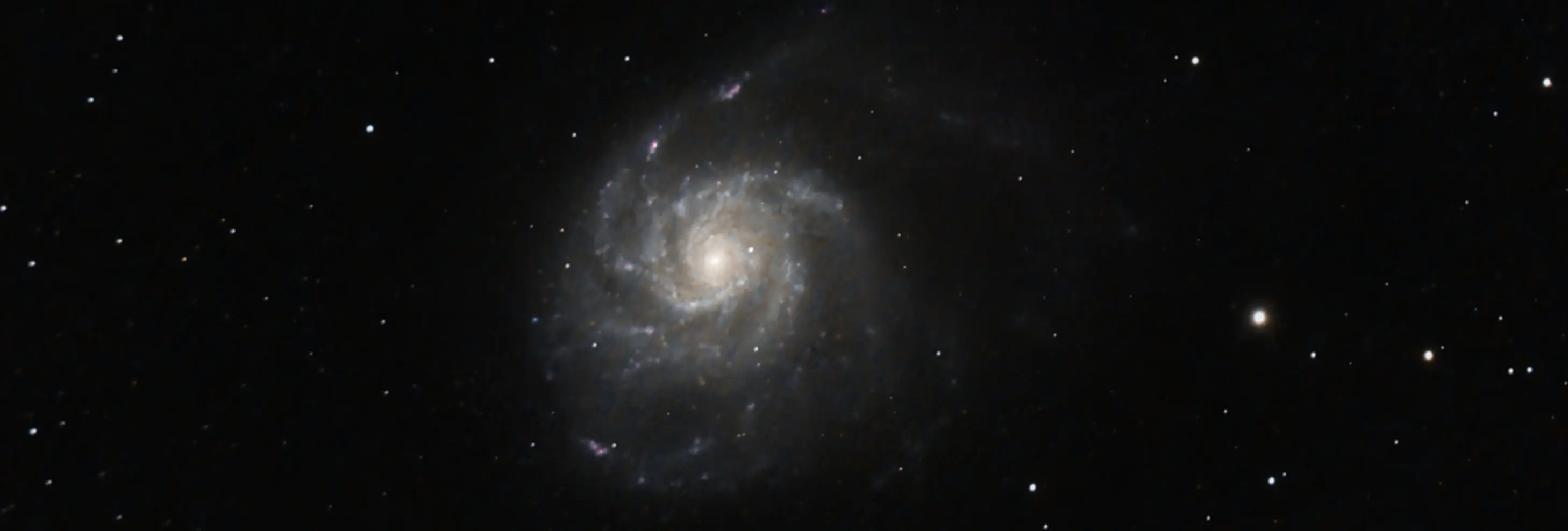Astrophysicist uses data gathered from Pinwheel galaxy more than 10 years ago to make analysis
A University of Central Lancashire (UCLan) researcher has identified the star at the origin of a supernova detected only a week ago in a neighbouring galaxy.
Astrophysicist Dr Joanne Pledger knew that when the supernova, designated SN 2023ixf, was discovered on the 19 May in what is commonly known as the Pinwheel Galaxy, she was ahead of the curve in discovering the star it once was.
Having identified a Red Supergiant star in the same location as the supernova more than ten years ago, Joanne already had the data that many astrophysicists are now scrambling to gather.
The UCLan astrophysicist completed a data analysis of the Pinwheel Galaxy (M101) whilst a post-doctoral researcher in 2010 working in New York with collaborator Professor Michael Shara. As part of her survey over the last decade, Joanne has looked at the massive stars in M101, around 20 million light years away from Earth, using imaging from the Hubble Space Telescope.
"We can be confident that this is the star that exploded. This is very exciting as the hydrogen-rich Type II supernova in M101 will be the closest supernova in over a decade for which we have been able to identify the star that exploded. "
— Astrophysicist Dr Joanne Pledger
Following the supernova discovery last week, Joanne found that there was a Red Supergiant star at the site of the supernova and quickly plotted the evolutionary path the star would take, determining the star to have between 8 and 12 times the mass of our own Sun.
Joanne, from the Jeremiah Horrocks Institute For Mathematics, Physics and Astronomy at UCLan, said: "Thousands of supernovas explode every year and we never identify the origin, or progenitor star as it is known, because they are too far away. In this instance, we can be confident in identifying the star that exploded. This is very exciting as the hydrogen-rich Type II supernova in M101 will be the closest supernova in over a decade for which we have been able to do this.
“When we identify a Red Supergiant star, we know it’s in the later stages of its existence but of course we don’t know when the supernova will happen – it could be next year, or it could be in a million years. It was sheer luck that the supernova was in the galaxy I have studied over the last 10 years.
"Being able to examine a supernova and compare this to what is known as the progenitor star is extremely useful as it can inform evolution theory and reveal more about how stars are formed."
— Astrophysicist Dr Joanne Pledger
“Being able to examine a supernova and compare this to its progenitor star is extremely useful as it can inform evolution theory and reveal more about how stars are formed.
“This is just the start of the investigation and over the next few years we will closely monitor the supernova to record images and see how it develops.”
A research paper supporting the possible detection of the SN 2023ixf supernova has been submitted to the Astrophysical Journal Letters.
The past papers studying the massive stars in M101 are available to read:
2017 - The First Optical Spectra of Wolf Rayet Stars in M101 Revealed with Gemini/GMOS
2013 - The vast population of Wolf–Rayet and Red Supergiant Stars in m101. I. Motivation and first result




